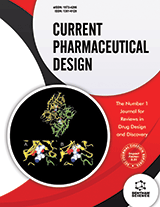Abstract
Graphene, with its outstanding electrical properties, large surface area, and excellent mechanical properties, is found in a wide variety of applications in biomimetic substrates and biomedicine, with the result that there is growing interest in the effect of graphene-based nanomaterials on neural cells. This review sums up current research on the effectiveness of graphene and its derivatives on neural cells. We emphasize the biocompatibility of graphene and its derivatives, and how they affect the behavior of neural cells, including adhesion, proliferation, neurite outgrowth and differentiation. In addition, we discuss at great length the literature on graphenebased nanomaterials for drug delivery applications. While their in vivo effects on the nervous system remain to be explored, encouraging findings indicate that graphene-based nanomaterials have significant potential as novel therapies for neurodegenerative disease.
Keywords: Graphene, neural cells, biocompatibility, biological activity, neurodegeneration, drug carrier.
Current Pharmaceutical Design
Title:Graphene-Based Nanomaterials: Potential Tools for Neurorepair
Volume: 24 Issue: 1
Author(s): Qing Wang, Yan-Hua Li, Wei-Jia Jiang, Jian-Guo Zhao, Bao-Guo Xiao, Guang-Xian Zhang*Cun-Gen Ma*
Affiliation:
- Department of Neurology, Thomas Jefferson University, Philadelphia, PA 19107,United States
- "2011" Collaborative Innovation Center/Research Center of Neurobiology, Shanxi University of Chinese Medicine, Taiyuan,China
Keywords: Graphene, neural cells, biocompatibility, biological activity, neurodegeneration, drug carrier.
Abstract: Graphene, with its outstanding electrical properties, large surface area, and excellent mechanical properties, is found in a wide variety of applications in biomimetic substrates and biomedicine, with the result that there is growing interest in the effect of graphene-based nanomaterials on neural cells. This review sums up current research on the effectiveness of graphene and its derivatives on neural cells. We emphasize the biocompatibility of graphene and its derivatives, and how they affect the behavior of neural cells, including adhesion, proliferation, neurite outgrowth and differentiation. In addition, we discuss at great length the literature on graphenebased nanomaterials for drug delivery applications. While their in vivo effects on the nervous system remain to be explored, encouraging findings indicate that graphene-based nanomaterials have significant potential as novel therapies for neurodegenerative disease.
Export Options
About this article
Cite this article as:
Wang Qing , Li Yan-Hua, Jiang Wei-Jia, Zhao Jian-Guo , Xiao Bao-Guo, Zhang Guang-Xian*, Ma Cun-Gen *, Graphene-Based Nanomaterials: Potential Tools for Neurorepair, Current Pharmaceutical Design 2018; 24 (1) . https://dx.doi.org/10.2174/1381612823666170828130526
| DOI https://dx.doi.org/10.2174/1381612823666170828130526 |
Print ISSN 1381-6128 |
| Publisher Name Bentham Science Publisher |
Online ISSN 1873-4286 |
 41
41 16
16 1
1 1
1
- Author Guidelines
- Bentham Author Support Services (BASS)
- Graphical Abstracts
- Fabricating and Stating False Information
- Research Misconduct
- Post Publication Discussions and Corrections
- Publishing Ethics and Rectitude
- Increase Visibility of Your Article
- Archiving Policies
- Peer Review Workflow
- Order Your Article Before Print
- Promote Your Article
- Manuscript Transfer Facility
- Editorial Policies
- Allegations from Whistleblowers
- Announcements


























